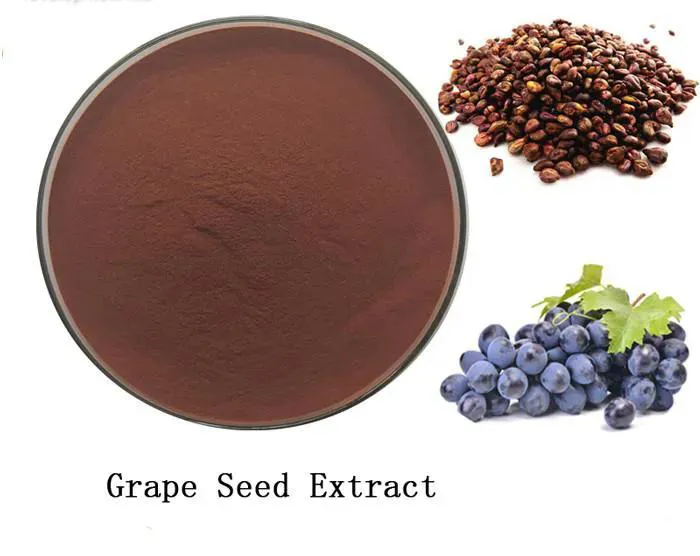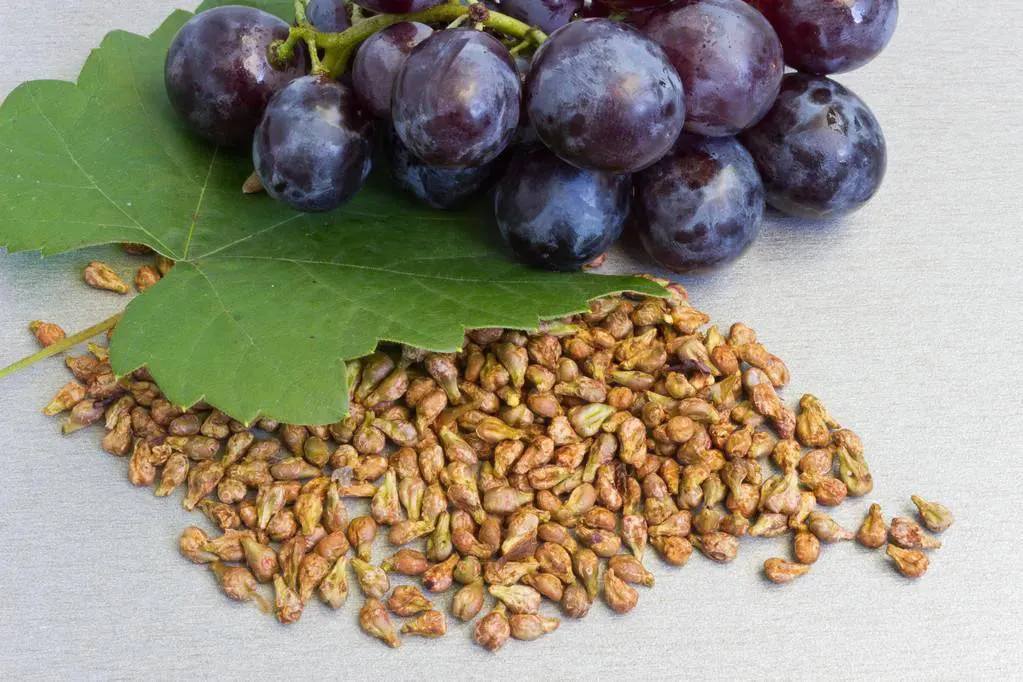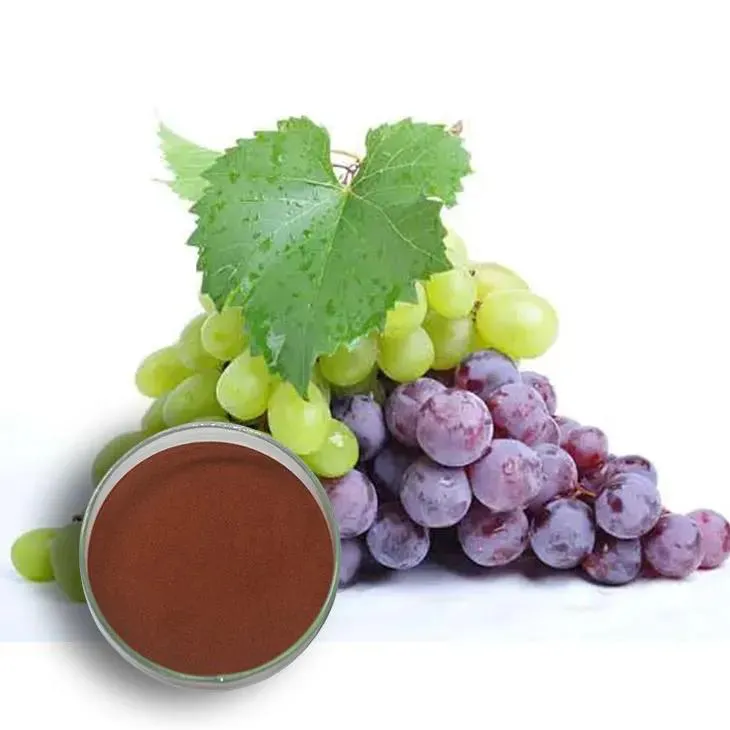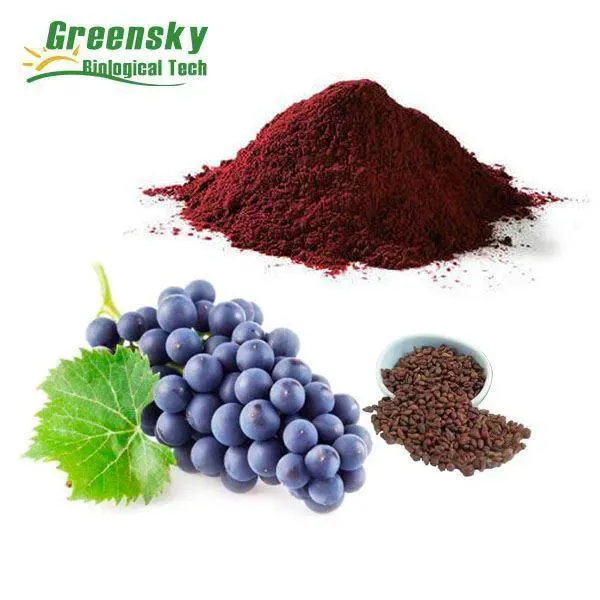- 0086-571-85302990
- sales@greenskybio.com
Melasma and Grape Seed Extract: A Promising Natural Approach to Skin Health
2024-08-09

1. Introduction
Melasma is a common skin condition that affects a significant number of people around the world. It is characterized by the appearance of brown or gray - brown patches on the skin, typically on the face, especially on the cheeks, forehead, nose, and upper lip. This condition not only affects the physical appearance but can also have an impact on an individual's self - esteem and quality of life.
While there are various treatment options available, many are looking for more natural alternatives. Grape Seed Extract has emerged as a potential solution in the realm of natural remedies for skin health. In this article, we will explore the relationship between melasma and Grape Seed Extract, delving into the nature of melasma and the properties of Grape Seed Extract that make it a promising candidate for treatment.

2. Understanding Melasma
2.1 Causes
Melasma is a multifactorial condition. Ultraviolet (UV) radiation from the sun is one of the major contributors. Prolonged exposure to sunlight can trigger the overproduction of melanin in the skin. Hormonal changes also play a crucial role. For example, pregnancy, the use of hormonal contraceptives, and hormonal replacement therapy can lead to an increase in melasma occurrence. Additionally, certain medications, thyroid disorders, and genetic factors may also be associated with the development of melasma.
2.2 Symptoms
The most obvious symptom of melasma is the presence of hyperpigmented patches on the skin. These patches can vary in size, shape, and color intensity. In some cases, they may be small and discrete, while in others, they can merge together to form larger areas of discoloration. The affected skin may also appear slightly thicker than the surrounding normal skin.

3. Grape Seed Extract: An Overview
3.1 Source and Production
Grape seed extract is derived from the seeds of grapes (Vitis vinifera). The extraction process involves crushing the grape seeds and then using solvents or mechanical methods to obtain the active compounds. Grapes are widely cultivated around the world, and as a result, grape seed extract is relatively accessible.
3.2 Nutritional Composition
Grape seed extract is rich in a variety of bioactive compounds. One of the most important is proanthocyanidins, which are a type of flavonoid. These proanthocyanidins are known for their antioxidant properties. Additionally, grape seed extract contains phenolic acids, flavonols, and stilbenes. These components work together to provide the extract with its unique health - promoting properties.

4. The Role of Grape Seed Extract in Skin Health
4.1 Antioxidant Activity
The antioxidant activity of grape seed extract is of great significance for skin health. Free radicals generated by factors such as UV radiation, pollution, and stress can cause damage to skin cells. Proanthocyanidins in grape seed extract can scavenge these free radicals, thereby protecting the skin from oxidative stress. This helps to prevent premature aging of the skin, including the formation of wrinkles and loss of elasticity.
4.2 Anti - Inflammatory Properties
Inflammation is often associated with various skin problems, including melasma. Grape seed extract has been shown to possess anti - inflammatory properties. It can modulate the body's inflammatory response by inhibiting the production of inflammatory mediators such as cytokines. By reducing inflammation in the skin, it may help to improve the appearance of melasma and other skin conditions.
4.3 Inhibition of Melanin Production
One of the key aspects in the treatment of melasma is the regulation of melanin production. Grape seed extract has been found to inhibit the enzyme tyrosinase, which is involved in the synthesis of melanin. By reducing the activity of tyrosinase, the extract can potentially decrease the production of melanin in the skin, thus helping to lighten the hyperpigmented patches associated with melasma.

5. Scientific Evidence Supporting the Use of Grape Seed Extract for Melasma
Several studies have been conducted to investigate the effectiveness of grape seed extract in treating melasma. In a small - scale clinical trial, participants with melasma were given grape seed extract supplements for a certain period. The results showed a significant reduction in the severity of melasma symptoms, as measured by objective criteria such as the Melasma Area and Severity Index (MASI). Another in - vitro study demonstrated that grape seed extract was able to effectively inhibit tyrosinase activity in melanocytes, further supporting its potential role in melasma treatment.
However, it should be noted that while these studies are promising, more extensive research is still needed. The sample sizes in some of the existing studies are relatively small, and the long - term effects of grape seed extract on melasma are not yet fully understood.
6. How to Incorporate Grape Seed Extract into Skin Care
6.1 Oral Supplementation
One way to obtain the benefits of grape seed extract for skin health is through oral supplementation. Grape seed extract supplements are available in various forms, such as capsules and tablets. It is important to follow the recommended dosage instructions provided by the manufacturer or a healthcare professional. Typically, a daily dose may range from 100 - 300 mg.
6.2 Topical Application
Grape seed extract can also be applied topically to the skin. There are some skin care products, such as creams and serums, that contain grape seed extract. When applying these products, it is advisable to clean the skin thoroughly first. Gently massage the product onto the affected areas until it is fully absorbed. However, it is important to note that some people may be sensitive to topical applications of grape seed extract, so a patch test should be done before regular use.
7. Precautions and Considerations
While grape seed extract shows potential for treating melasma and promoting skin health, there are some precautions to keep in mind. Allergic reactions can occur in some individuals, especially those with a known allergy to grapes or other related products. If any signs of an allergic reaction, such as itching, redness, or swelling, occur after using grape seed extract, discontinue use immediately and seek medical attention.
Also, grape seed extract may interact with certain medications. For example, it may enhance the blood - thinning effects of anticoagulant medications. Therefore, if you are taking any medications, it is essential to consult your doctor before starting to use grape seed extract.
8. Conclusion
Melasma is a complex skin condition that can be challenging to treat. Grape seed extract offers a promising natural approach to addressing this issue. With its antioxidant, anti - inflammatory, and melanin - inhibiting properties, it has the potential to improve the appearance of melasma and enhance overall skin health. However, more research is needed to fully understand its effectiveness and safety. In the meantime, for those interested in exploring natural remedies for melasma, grape seed extract may be a viable option, but it should be used with caution and under the guidance of a healthcare professional.
FAQ:
What is melasma?
Melasma is a common skin condition characterized by the appearance of brown or gray - brown patches on the skin, typically on the face. It is often associated with hormonal changes, sun exposure, and genetic factors. These patches can be quite distressing for those affected, as they are visible and can affect one's self - esteem.
What are the main causes of melasma?
The main causes of melasma include hormonal fluctuations, such as those during pregnancy or while taking hormonal medications. Sun exposure is also a significant factor, as ultraviolet (UV) rays can trigger the overproduction of melanin in the skin. Additionally, genetic predisposition plays a role, meaning that if there is a family history of melasma, an individual may be more likely to develop it.
How does grape seed extract work on melasma?
Grape seed extract contains powerful antioxidants such as proanthocyanidins. These antioxidants can help combat oxidative stress in the skin. Oxidative stress is linked to the overproduction of melanin in melasma. By reducing oxidative stress, grape seed extract may potentially regulate melanin production, thereby helping to fade the dark patches associated with melasma.
Are there any side effects of using grape seed extract for melasma?
Generally, grape seed extract is considered safe for most people when used as directed. However, some individuals may experience mild side effects such as stomach upset, nausea, or allergic reactions in rare cases. It is always advisable to do a patch test before using any new product containing grape seed extract, especially if you have sensitive skin.
How can one use grape seed extract for melasma?
Grape seed extract can be used in various forms for melasma. It is available as a supplement in capsule form, which can be taken orally following the recommended dosage. Some skincare products also contain grape seed extract, such as creams and serums. These can be applied topically to the affected areas of the skin. However, it is important to consult a dermatologist before starting any new treatment regimen.
Related literature
- The Role of Antioxidants in Skin Health and Melasma Treatment"
- "Grape Seed Extract: A Comprehensive Review of its Benefits for Skin Conditions"
- "Melasma: Etiology, Diagnosis, and Treatment Options"
- ▶ Hesperidin
- ▶ citrus bioflavonoids
- ▶ plant extract
- ▶ lycopene
- ▶ Diosmin
- ▶ Grape seed extract
- ▶ Sea buckthorn Juice Powder
- ▶ Beetroot powder
- ▶ Hops Extract
- ▶ Artichoke Extract
- ▶ Reishi mushroom extract
- ▶ Astaxanthin
- ▶ Green Tea Extract
- ▶ Curcumin Extract
- ▶ Horse Chestnut Extract
- ▶ Other Problems
- ▶ Boswellia Serrata Extract
- ▶ Resveratrol Extract
- ▶ Marigold Extract
- ▶ Grape Leaf Extract
- ▶ blog3
-
Lycopene
2024-08-09
-
Selenium yeast
2024-08-09
-
melatonin extract
2024-08-09
-
Clove Powder
2024-08-09
-
Apricot Powder
2024-08-09
-
Lily extract
2024-08-09
-
Curcuma Longa Extract/Turmeric extract
2024-08-09
-
Curcumin Extract
2024-08-09
-
Cranberry Extract
2024-08-09
-
Chasteberry Extract
2024-08-09





















